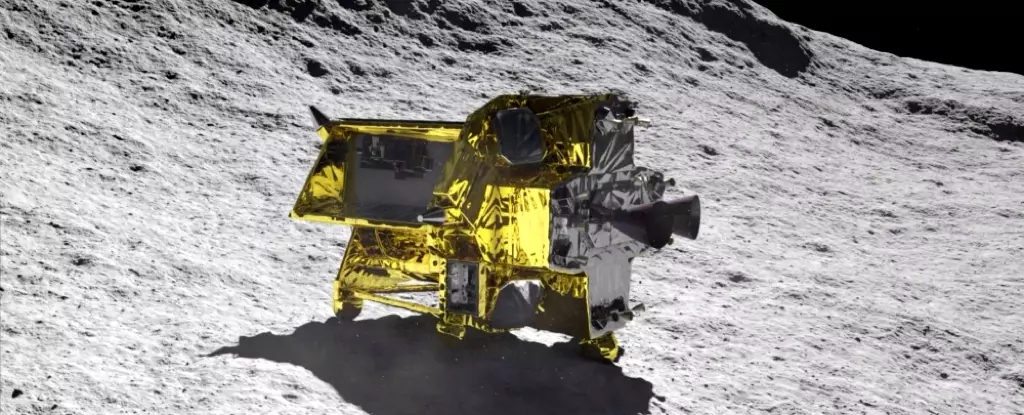Japan successfully accomplished a significant milestone in space exploration as it became the fifth country to achieve a soft lunar landing. Its unmanned Smart Lander for Investigating Moon (SLIM) mission, also referred to as “Moon Sniper” due to its precision landing capabilities, made history in the early hours of Saturday. However, despite the triumphant touchdown, concerns arose regarding the craft’s solar batteries generating power. Consequently, Japan’s space agency, the Japan Aerospace Exploration Agency (JAXA), decided to switch off the lander temporarily. This move was to allow for a potential recovery of the craft when sunlight hit its solar panels.
JAXA’s primary objective in turning off the lander was to avoid any hindrance in the restart process if the craft’s power supply diminished further. Before remotely shutting down the lander, mission control successfully obtained technical and image data from the descent and lunar surface. This validation provided them with some relief and excitement. JAXA remarked that based on the telemetry data received, the SLIM’s solar cells were facing west. Therefore, if sunlight reaches the Moon from that direction in the future, there is a possibility of power generation. To ensure this outcome, JAXA is currently preparing for the restoration process.
SLIM’s achievement adds to the growing number of lunar missions launched by governments and private firms, half a century after the first human Moon landing. Despite the advancements in technology, lunar missions still encounter challenges such as crash landings and communication failures. Only four other countries have successfully reached the Moon: the United States, the Soviet Union, China, and India. Japan’s triumph with SLIM aims to contribute to scientific research on the Moon’s mysterious water resources. By analyzing rocks from a designated lunar crater, JAXA hopes to shed light on the potential for establishing future bases and utilizing the Moon as a stopover on the way to Mars.
While the successful landing was undoubtedly a cause for celebration, JAXA remains committed to a meticulous analysis of the data gathered. This analysis is crucial in determining whether SLIM accomplished its goal of landing within 100 meters (330 feet) of the intended spot. The selected crater, believed to reveal the Moon’s mantle, offers an opportunity to unravel the mysteries surrounding the presence of water resources. Understanding the Moon’s water reserves is a vital step towards future manned missions and the construction of sustainable bases.
JAXA has announced that additional updates regarding the mission’s outcomes and the status of the SLIM craft will be made public later this week. Despite the slight deviations from the planned trajectory, JAXA remains optimistic about the fruitful results that can be derived from the mission’s achievements. Though faced with past failures in lunar missions, Japan’s determined pursuit of space exploration affirms its commitment to contributing to scientific progress and international space research efforts.
It is essential to note that Japan’s accomplishments with SLIM mark a significant breakthrough, especially considering the setbacks faced in previous lunar missions. In 2022, the country’s lunar probe named Omotenashi failed to achieve its objectives within the context of the United States’s Artemis 1 mission. Furthermore, in April of this year, the Japanese startup ispace experienced a communication failure and lost contact with its craft during a “hard landing” attempt to become the first private company to land on the Moon. Japan’s perseverance demonstrates the country’s commitment to addressing challenges head-on, learning from past experiences, and advancing scientific knowledge.
Japan’s successful soft lunar landing with the SLIM mission is a testament to the country’s capabilities in space exploration. The temporary switch-off of the lander was a precautionary measure to ensure the craft’s potential recovery when sunlight reaches its solar panels. The data collected during this historic landing holds the key to unlocking mysteries about the Moon’s water resources and future possibilities for manned missions. JAXA’s dedicated analysis of the data will further enrich our understanding of the lunar surface and contribute to humanity’s continued exploration of space.

Leave a Reply